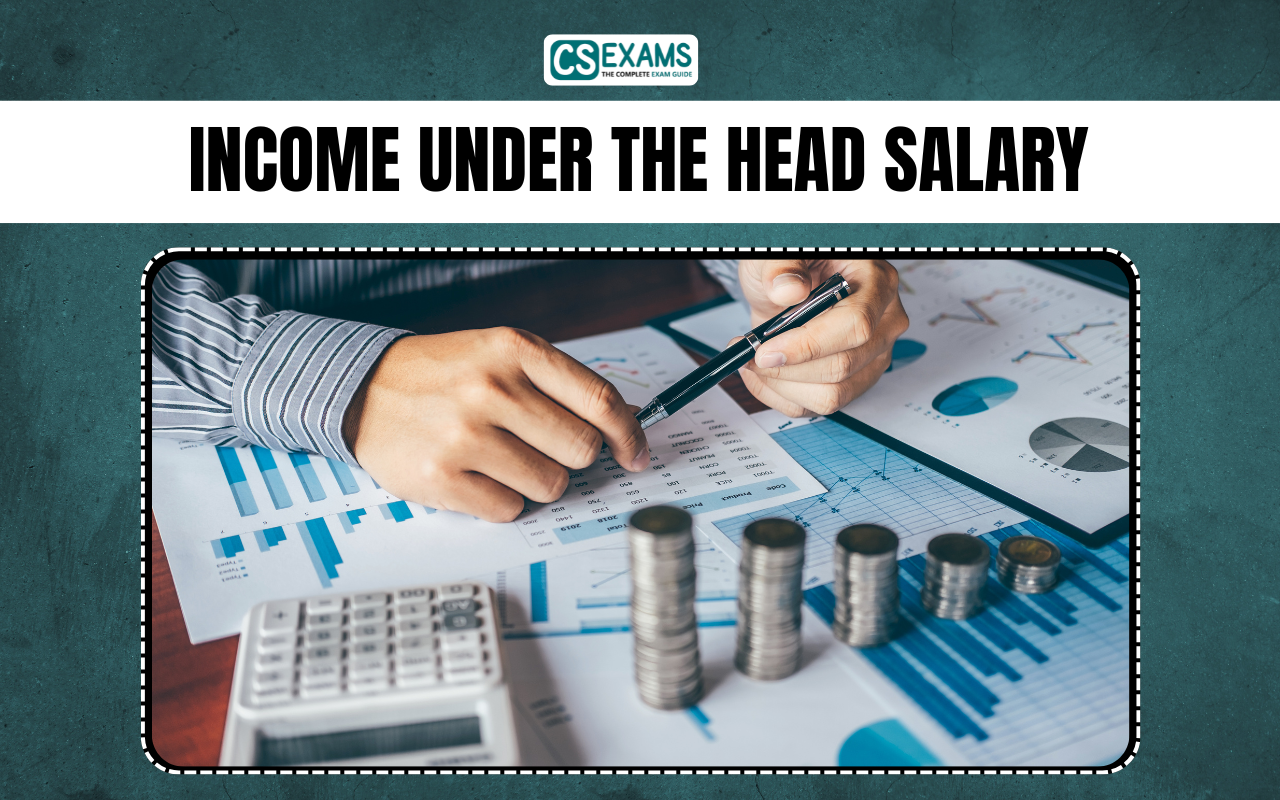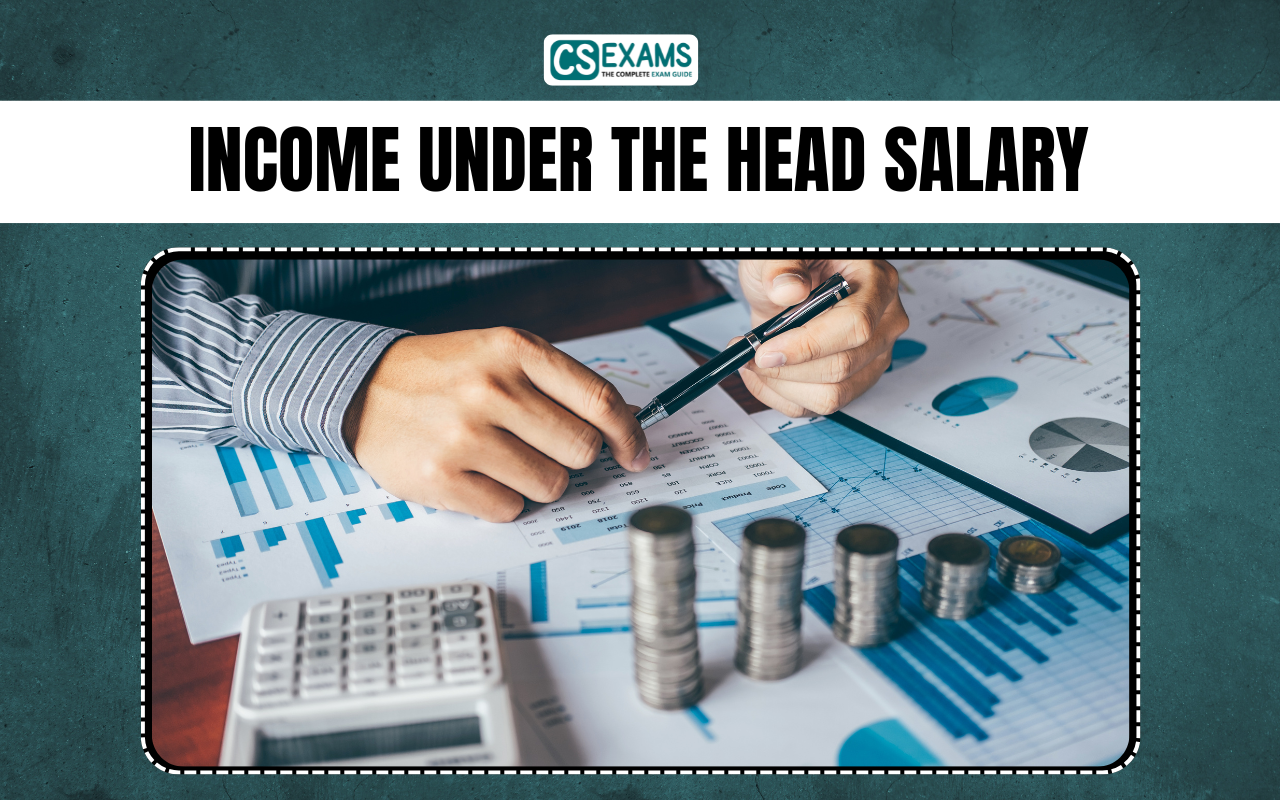In the field of taxation, "Income Under the Head Salary" is one of the five heads of income as per the Income Tax Act, 1961. For CS students and exam aspirants, understanding this concept is not only important for exams but also for practical application in tax filing and advisory roles.
Let’s dive into what counts as salary income, its components, exemptions, and how it is computed.
What is the salary?
The salary involves the remuneration received by a person for services provided as an employee. It has monetary payments such as basic wages, bonuses, and commissions, as well as non-monetary benefits. According to Section 17(1) of the Income Tax Act, the definition of salary is inclusive of wages, annuities, pensions, gratuity, fees, commissions, illegal profits, profits instead of salary, profits, advance salary, leave (except encashment), contributions to pensions, and pensions. This broad definition ensures that the head is occupied under the head "salary" for all types of remuneration.
Components of Salary (Breakdown)
| Component | Description | Taxable? |
| Basic Salary | Fixed component of salary | Yes |
| Dearness Allowance (DA) | Paid to offset inflation | Yes |
| House Rent Allowance | For rented accommodation | Partially Exempt |
| Leave Travel Allowance | For travel expenses | Partially Exempt |
| Bonus/Incentives | Extra performance-based payments | Yes |
| Gratuity | Paid at retirement/resignation | Exempt up to limit |
| Provident Fund | Contribution towards retirement | Employer part exempt |
| Perquisites | Non-monetary benefits (car, accommodation) | Taxable or Exempt |
House Rent Allowance (HRA) Exemption – Section 10(13A)
One of the most asked concepts in exams. HRA is partially exempt, calculated using this formula:
Least of the following is exempt:
- Actual HRA received
- 50% of salary (metro cities) or 40% (non-metro)
- Rent paid – 10% of salary
E.g., If your salary is ₹50,000, rent is ₹15,000, and HRA received is ₹20,000, calculate all 3 values to find the exempt portion.
Perquisites (Section 17(2))
Perquisites are benefits or amenities provided by employer like:
- Rent-free accommodation
- Company car
- Free meals
- Medical reimbursements
Some perquisites are fully taxable, some are partially exempt, and few are fully exempt depending on their nature.
Fully Taxable Allowances
- Dearness Allowance (DA)
- Overtime
- Bonus/Incentives
- City Compensatory Allowance (CCA)
These are always fully added to gross salary.
Exemptions Under Section 10
| Section | Type of Exemption | Max Limit |
| 10(13A) | HRA | As per rules above |
| 10(5) | LTA | Actual travel fare (conditions apply) |
| 10(10) | Gratuity | ₹20 lakhs max (Govt employee) |
| 10(10C) | VRS Compensation | ₹5 lakhs |
| 10(14) | Special Allowances | Based on actual expenses |
How to Compute Income Under Head Salary?
Step-by-step process:
- Start with Gross Salary = Basic + DA + Bonus + Allowances
- Add Perquisites (like car, house)
- Subtract Exemptions (HRA, LTA, etc.)
- Subtract Standard Deduction = ₹50,000
Final result = Net taxable salary
Example Calculation:
- Basic Salary: ₹6,00,000
- HRA: ₹2,40,000
- Rent Paid: ₹1,80,000/year
- DA: ₹60,000
- Bonus: ₹40,000
- Perquisites: ₹30,000
Standard Deduction: ₹50,000
Calculation of Exempt HRA:
-
40% of salary = ₹2,40,000
-
Rent – 10% = ₹1,20,000
-
Actual HRA = ₹2,40,000
Least = ₹1,20,000 (exempt)
Now, taxable salary:
6,00,000 + 60,000 + 40,000 + 30,000 - 1,20,000 - 50,000 = ₹7,60,000
Summary for Exam Revision:
- Employer-employee relation is must
- Salary includes basic, DA, bonus, allowances, and perquisites
- HRA, LTA, gratuity can be partially exempt
- Standard deduction of ₹50,000 allowed
- Use proper formulae to compute exemptions








